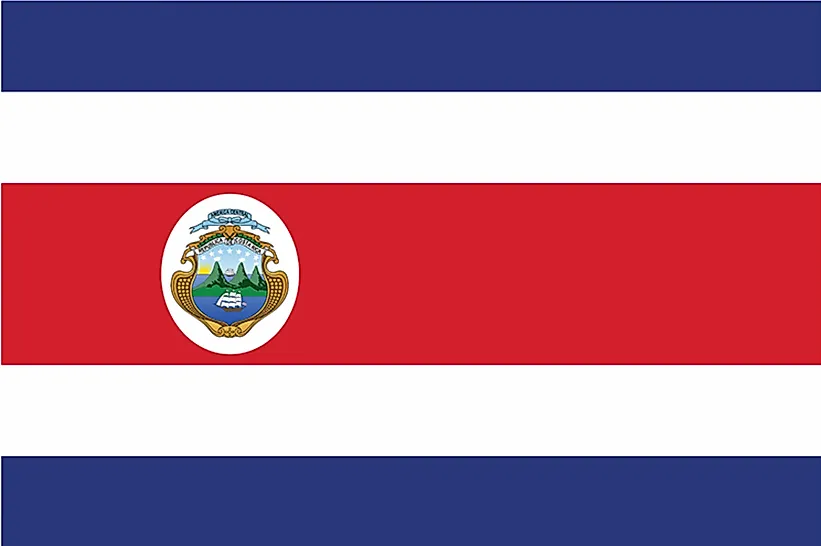
Costa Rica
| Continent | Americas |
| Capital | San Jose |
| Population | 4,872,543 |
| GDP | $79.26 Billion |
| GDP per Capita | $16,100 |
| Dialing Code | +506 |
| ISO Code (2-letter) | CR |
| ISO Code (3-letter) | CRI |
Costa Rica Landscapes






About Costa Rica
Welcome to Costa Rica, a Central American nation renowned for its commitment to environmental conservation and peaceful way of life. With approximately 5.1 million people occupying 51,100 square kilometers, Costa Rica has earned international recognition for its dedication to sustainability, biodiversity, and social progress. The country’s motto, “Pura Vida” (Pure Life), reflects its approach to life and development.
Geographic Features and Natural Beauty
Costa Rica’s geography encompasses extraordinary biodiversity within a relatively small area, featuring both Pacific and Caribbean coastlines, tropical rainforests, cloud forests, and active volcanoes. The country contains about 5% of the world’s biodiversity despite occupying only 0.03% of Earth’s surface.
The Cordillera Central mountain range runs through the country’s center, creating diverse microclimates and ecosystems. Arenal Volcano, one of the world’s most active volcanoes until 2010, remains a major tourist attraction. The Monteverde Cloud Forest Reserve showcases unique highland ecosystems and rare species.
The country’s coastal areas feature beautiful beaches, coral reefs, and marine ecosystems. Manuel Antonio National Park exemplifies the convergence of rainforest and coast, while Tortuguero National Park on the Caribbean coast is crucial for sea turtle nesting.
Cultural Heritage and Traditions
Costa Rican culture, often described as tranquil and egalitarian, reflects the country’s commitment to peace and social harmony. Having abolished its military in 1948, Costa Rica has focused resources on education, healthcare, and environmental protection.
Traditional arts include pottery inspired by pre-Columbian designs, wooden crafts, and colorful ox cart painting, particularly in the town of Sarchí. Music and dance traditions blend indigenous, European, and African influences, with the punto guanacasteco being the national dance.
Costa Rican cuisine features fresh ingredients and simple preparation, with gallo pinto (rice and beans) serving as the national dish. Coffee culture is particularly important, with Costa Rican beans being among the world’s most prestigious.
Historical Journey
Costa Rica’s history differs from many of its neighbors, characterized by relatively peaceful development and early democratic traditions. The country was somewhat isolated during the colonial period, leading to more egalitarian social structures.
After independence from Spain in 1821, Costa Rica developed strong democratic institutions. The 1948 decision to abolish the military and focus on social development has made the country a model of peaceful progress in Latin America.
Modern Economic Landscape
Today’s Costa Rica has a diverse economy based on tourism, technology, agriculture, and services. The country has successfully positioned itself as an ecotourism destination while also attracting significant foreign investment in technology and services sectors.
Costa Rica leads in sustainable practices, generating over 98% of its electricity from renewable sources. The country has set ambitious environmental goals, including becoming carbon neutral, while maintaining economic growth.
International Relations and Global Position
Costa Rica maintains active participation in international affairs, often playing a mediating role in regional conflicts. The country is known for its strong stance on environmental protection and human rights, hosting the Inter-American Court of Human Rights.
Did You Know?
• Costa Rica has no army, having abolished its military in 1948?
• The country generates over 98% of its electricity from renewable sources?
• Costa Ricans have one of the highest life expectancies in the Americas?
• The country is home to more than 500,000 species, making it one of the world’s most biodiverse nations?
Conclusion
Costa Rica stands as a remarkable example of how a nation can prioritize environmental protection and social welfare while achieving economic development. From its rainforests to its beaches, from its sustainable practices to its peaceful society, Costa Rica continues to demonstrate an alternative path to national development. As it faces challenges including urbanization and economic inequality, Costa Rica remains committed to its principles of conservation, peace, and “Pura Vida.”